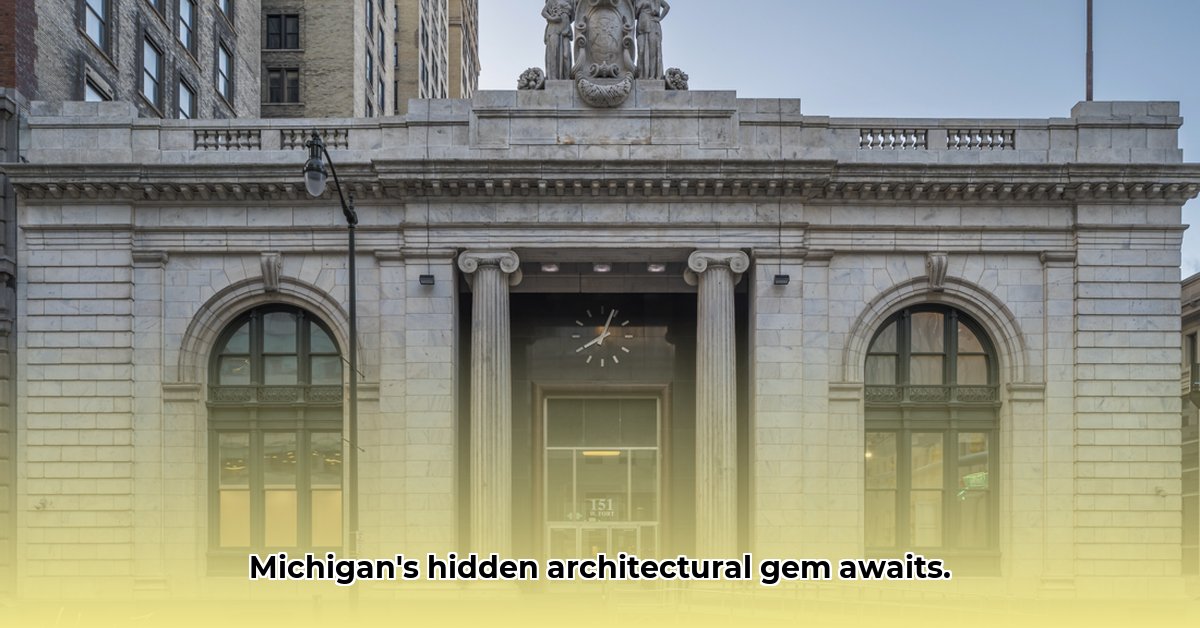
The unassuming bronze plaque marking the State Savings Bank in Grand Rapids whispers a story of elegance, ambition, and a fascinating historical puzzle. More than just a former bank, this building stands as a captivating time capsule, a testament to Grand Rapids' growth and the architectural prowess of McKim, Mead & White. Its Neoclassical grandeur, however, masks a mystery—a relatively incomplete historical record begging for further exploration. This article delves into the known history, architectural features, and preservation efforts surrounding this significant Michigan landmark, highlighting the need for continued research and community involvement.
A Glimpse into Neoclassical Grandeur
Imagine Grand Rapids in 1900. Horse-drawn carriages clatter along cobblestone streets, past a newly erected edifice that radiates confidence and success: the State Savings Bank. Designed by the renowned firm McKim, Mead & White, this building is not merely functional; it's a powerful statement of ambition and financial prowess. Its gleaming white marble façade, complemented by intricate bronze detailing, immediately commands attention. Imposing columns and carefully crafted proportions speak eloquently of the Neoclassical style, a visual language of order, harmony, and civic virtue. But beyond the surface beauty lies a compelling narrative, waiting to be fully revealed. The existing historical accounts, while insightful, leave significant gaps, adding a layer of intriguing mystery to the building's past.
Uncovering the Past: A Bank's Untold Tales
The State Savings Bank played a pivotal role in Grand Rapids' financial development. It was likely the location where countless loans were processed, fortunes amassed, and the city's economic lifeblood flowed. But the details of its daily operations—the bustle of transactions, the hushed conversations of financial deals, the quiet concentration of tellers—remain largely undocumented. What were the personal stories of the bank's employees and customers? What financial decisions shaped the city's destiny within these walls? These are questions that beckon further research. Old photographs, forgotten ledgers, and personal accounts hold the key to unlocking a richer and more complete understanding of this significant institution. What a treasure trove of stories waits to be unearthed!
A Building's Transformation: Rebirth and Preservation
By 1980, the State Savings Bank had transitioned into the headquarters for Silver's Inc. This adaptive reuse, a common path for historic structures, highlights the ongoing challenge of balancing preservation with modern needs. The question remains: how effectively did this transformation preserve the building's original architectural integrity? Were any significant alterations made that compromised its historical character? Such questions emphasize the importance of careful planning and diligent preservation efforts when adapting historic buildings for contemporary use. The enduring presence of the historical marker serves as a constant reminder of the ongoing need to protect this architectural jewel.
Delving Deeper: The Ongoing Quest for Answers
To fully appreciate the State Savings Bank's legacy, a more comprehensive historical investigation is crucial. This isn't merely an academic pursuit; it's a vital part of preserving Grand Rapids' cultural heritage. The incomplete historical record underscores the need for collaborative effort between historians, archivists, and the local community to piece together the complete narrative. Exploring local archives, interviewing descendants of those connected to the bank, and carefully examining surviving documents will shed light on the untold stories within those marble walls. Each piece of information uncovered will contribute to a more nuanced understanding of this architectural treasure.
Preserving a Legacy: A Collaborative Endeavor
The historical marker itself serves as a call to action, a symbol of our collective responsibility to safeguard this valuable legacy. Its preservation hinges upon the collaborative efforts of multiple stakeholders:
- Historical Societies: Conducting oral histories, reviewing local archives, and publishing findings.
- City of Grand Rapids: Assessing structural integrity, exploring public access options, and developing preservation plans.
- Michigan Historical Center: Updating historical information, collaborating on public awareness initiatives, and supporting restoration efforts.
- Building Owners/Managers: Maintaining the building's structural integrity through regular maintenance and addressing necessary repairs.
The State Savings Bank historical marker inspires us to act proactively in protecting our architectural heritage. It reminds us that collaboration is key to ensuring that this, and other significant buildings, endure for generations to come. The legacy of the State Savings Bank deserves nothing less.